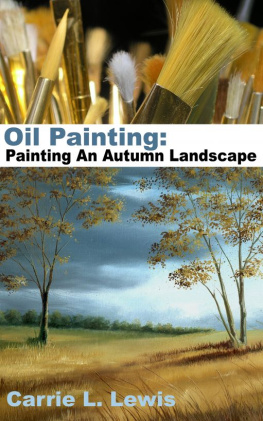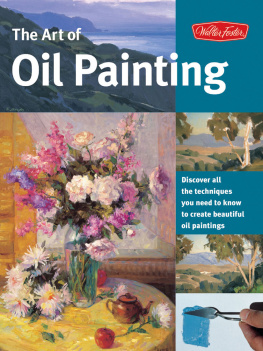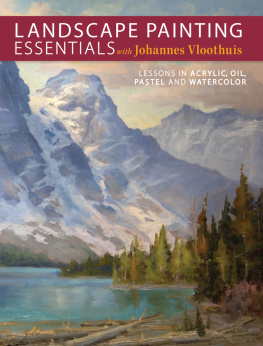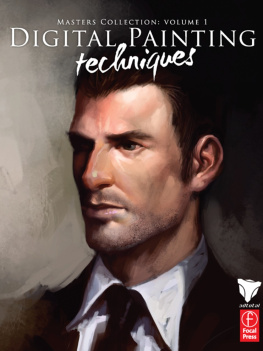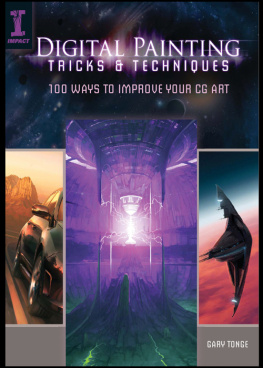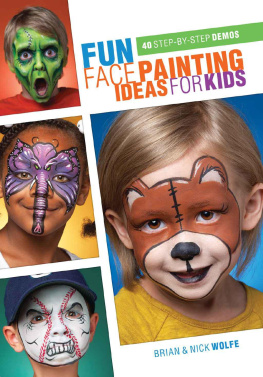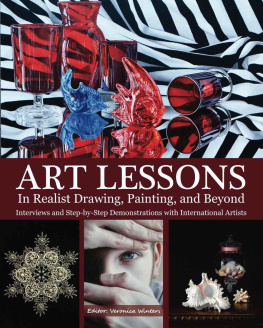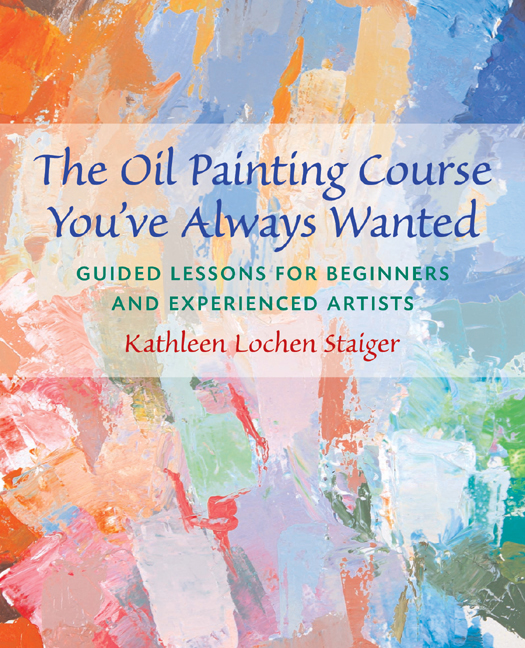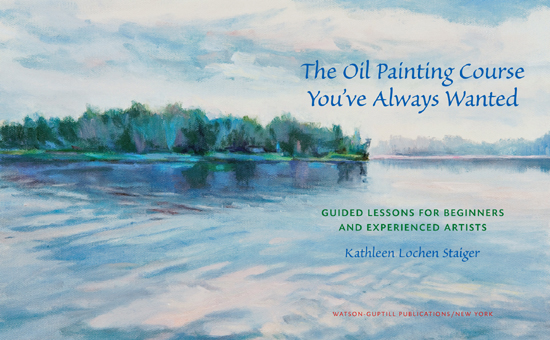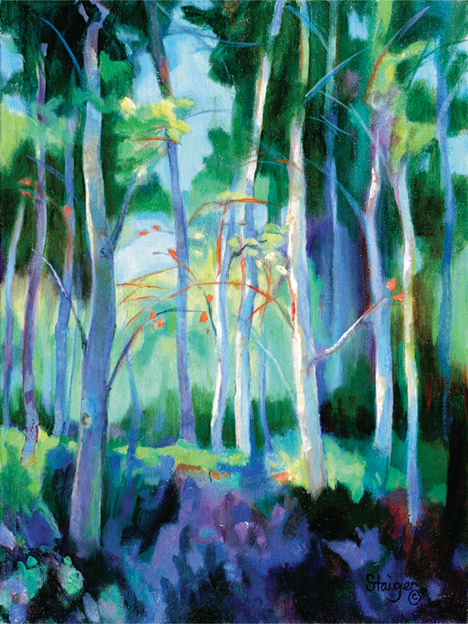PREVIOUS PAGES: Kathleen Lochen Staiger , Early Morning on the Indian River, oil on canvas
EXECUTIVE EDITOR: Candace Raney
EDITOR: Alison Hagge
DESIGNER: Patricia Fabricant
PRODUCTION MANAGER: Hector Campbell
Copyright 2006 by Kathleen Lochen Staiger
First published in 2006 by Watson-Guptill Publications,
an imprint of the Crown Publishing Group,
a division of Random House, Inc., New York
www.crownpublishing.com
www.watsonguptill.com
Library of Congress Cataloging-in-Publication Data
Staiger, Kathleen Lochen.
The oil painting course youve always wanted : guided lessons for beginners and experienced artists / Kathleen Lochen Staiger.
p. cm.
eBook ISBN: 978-0-7704-3454-0
Trade Paperback ISBN: 978-0-8230-3259-4
1. PaintingTechnique. I. Title.
ND1473.S73 2006
751.45dc22
2005030763
Every effort has been made to trace the ownership of and to obtain permission to reproduce the material in this book. The author, editors, and publisher sincerely apologize for any inadvertent errors and will be happy to correct them in future editions.
All rights reserved.
v3.1
To my husband, Bill, my best friend and biggest fan, who always believed I could do this .
This book exists, in large part, because of the enthusiasm of my students who urged me to set down my teaching in more permanent form. I would like to thank them. Many of the paintings in this book are the result of their talent.
Friends Irene Marco, Joan McCarthy, and Dierdre Bugbee helped by reading and critiquing the text, and writer Ann Taylor gave me publication tips. They all shared my joy at having the book accepted for publication.
I owe a lot to my photographers: Carter Gibbons, who started the project and who will be remembered with great affection; Anne Malsbury, a photographer friend who spent hours in my studio shooting over my shoulder; and Jon Pine, who does amazing digital photography. I appreciate both their excellent work and their patience with me.
A big hug and thanks go to my daughter Shari for lending her expertise as a graphic designer to correlate and edit the illustrations.
Last, I must thank my mother for her encouragement and love, and especially for all the meals she cooked to free my time to devote to the writing of this book. I love you, Mom.
Contents
Kathleen Lochen Staiger, Aspen Grove, oil on canvas
Introduction to the Course
F OR YEARS I have been hearing from my students, Why havent I ever learned this before? This book is the result of requests that have come to me over the years to put my teaching down in permanent form. It is taken directly from the Basic Techniques of Oil Painting course Ive taught successfully for more than thirty-five years. Whether you are a beginning painter or one who has painted for years but never had a really good basic course, this book will teach you how to paintand how to paint better.
The Oil Painting Course Youve Always Wanted is an actual painting course that you can take at home. Working at home (rather than in a classroom) gives you the advantage of being able to spend as much time as you need on each project. Using this book gives you other benefits, too, because I have been able to include a lot of additional material that I couldnt teach in the original course due to time constraints. You will find a lot of help with problem solving and mistake fixing, as well as greater depth in each subject.
The course is organized into a series of lessons. Each lesson deals with a different aspect of painting, and each lesson builds on the previous one so that you learn by doing , which is, of course, the very best way of learning.
To get the most out of the book, you should start at the beginning and do each exercise and project. Dont skip any chapters, even if you think you know whats in them. You may miss something new and useful. The step-by-step projects in each lesson cover such topics as shading, color mixing, color theory, brush handling, and composition. I will guide you through the creation of a still life painting, landscape painting, and portrait painting, with specific technique information on each subject.
I have devoted a large portion of the book to the important subject of color mixing. There is an entire chapter dedicated to it as well as specific color advice in each of the other lessons. So after you finish this course, you shouldnt ever have to search hit-or-miss for the right color again.
While this book is directed at oil painters, the methods of color mixing, including the important Rule for Shadows, are of benefit to any artist working with color, and many of the exercises can be adapted to other media.
Throughout the book you will see examples of students paintings from the course, so you can compare the instructions for the projects with some finished work.
You do not need any previous experience in art or painting, and talent is not a requirement for this class. This book will not only teach you how to paint, but will also teach you a new way of seeingand hopefully will mark the beginning of a lifelong enjoyment of painting.
Getting Your Supplies Together
T HIS CHAPTER will give you some information and pointers about the supplies you will need. Its a good idea to always buy the very best materials you can afford, but there are acceptable substitutes to professional-grade supplies that will work just fine while you are learning. I will point out where you can substitute and where you should invest in better quality. On you will find a concise list of supplies. Welcome to the class!
PAINT
I like to work with traditional oil paint, but water-mixable oil paint will also work. If you are starting out, I recommend using student-grade oil paint because it is reasonably priced and its quality is acceptable. Winton and Academy are the student-grade lines of paint made by Winsor & Newton and Grumbacher respectively. While you can use any brand of paint, the colors I list are based on these two brands and are exactly what you will need to do the exercises.
While most colors are nearly the same from brand to brand, some of the yellows vary widely. There also may be a little confusion over the different ultramarine blues available. French Ultramarine and Ultramarine Blue are almost exactly the same in most brands. Winton and Academy both call this color French Ultramarine, so we have listed it as French Ultramarine blue throughout the book to avoid confusion. If you want to use Ultramarine Blue in another brand, or any other color in another brand, just be sure to compare the color you buy against the one on the list so that you get the right color.
NOTE: While you can mix brands, be sure you dont mix oil paint with acrylic or alkyd paint.
In addition to the thirteen essential colors, I have included two optional oxide colors on the shopping listOxide of Chromium (green oxide) and Indian Red (red oxide). These colors are mentioned in the text but are not necessary.




